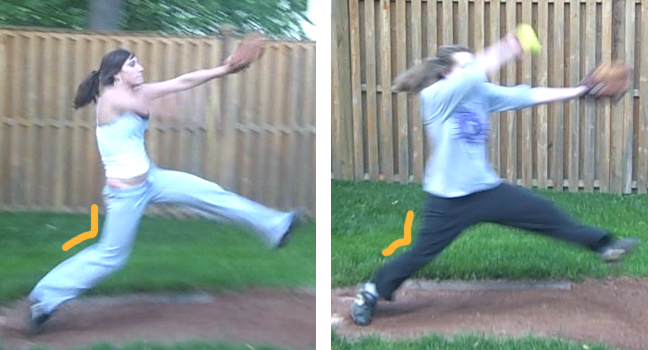Every Athlete is Not the Same
Today I’m going to talk about a couple of pet peeves I have when it comes to teaching/learning windmill pitching, though what I say can be applied to any skill. The key concept I want to underline is that every athlete is not the same. Every athlete has a slightly different body type, different physical strengths and weaknesses, and different ways of mentally processing information. What do we, as both instructors and students, need to take away from this?
Instructing the Individual: Allowing for Small Variations in Mechanics
When teaching windmill pitching, I think it’s very important to ensure the major mechanical points are hit while leaving a little room for variation in some of the smaller details. If you watch an NCAA tournament, you’ll notice that there are A LOT of really excellent pitchers, and each of them looks a little different when she pitches. Two pitchers can each employ excellent mechanics and still make them look unique.
This isn’t an excuse to let pitching students get away with poor/unsafe mechanics, but there are certain details that are not absolute.
EXAMPLE 1: I recently broke down hand position around the arm circle. Coming down the back of the circle and approaching the throw zone, how far the ball turns to face the sky is not an absolute, but rather depends on the individual’s shoulder flexibility. The position should, above all else, not cause stress.
EXAMPLE 2: We advocate a full drive-through with a toe grazing the ground and the drive-leg knee powering toward the catcher. But take a look at the differences between me and coach Jill doing this:

Both of us have our knees pointed forward, and both of us have the big toe grazing the ground. Coach Jill’s shoelaces are pointed completely forward; mine are pointed to the side. This depends on how the pitcher’s legs are structured. Small details are different without sacrificing the important points.
EXAMPLE 3: The same pre-motion doesn’t work for everyone. As long as it isn’t hurting your pitch, variation is OK.
These are just a few very specific examples, but hopefully they give you an idea of what I mean. Before mandating absolutes for these little details, first step back and see if the pitcher is really just getting the job done in her own way.
Instructing the Individual: Tailor Your Teaching
- Different drills will prove helpful to different athletes.
- Two pitchers with the same mechanical problem may respond to two completely different explanations of how to fix it.
- Different pitches will be more effective for different pitchers. Assess the individual; don’t just teach the same pitches in the same order at the same time to everyone.
A Warning for Watching Others
You may very well see outstanding elite pitchers on TV totally contradicting what you/your child is learning. Form your assessments of these situations very carefully. Remember that EVERYONE IS DIFFERENT, and this goes double for comparing a division 1 college pitcher to a younger pitcher. The former will be very strong, and thus likely to be able to perform certain aspects of the pitch very well without necessarily having picture perfect mechanics. Before using another pitcher as an example in your argument, ask yourself: is she succeeding BECAUSE OF a particular action, or IN SPITE of it?
The concepts I’ve discussed are far from concrete. It takes experience and a little experimentation to be able to tell the difference between harmful mechanics and reasonable variations. If you are ever unsure about something, feel free to leave a comment or contact us!